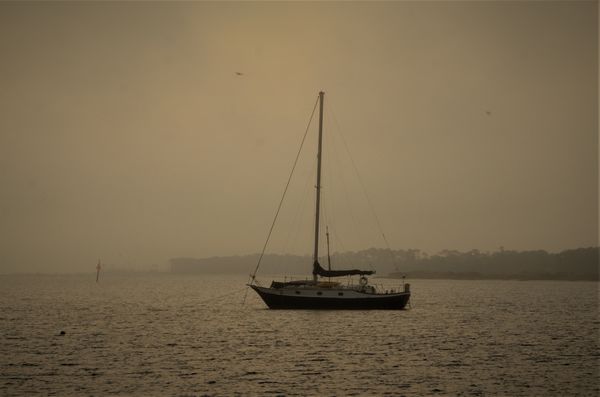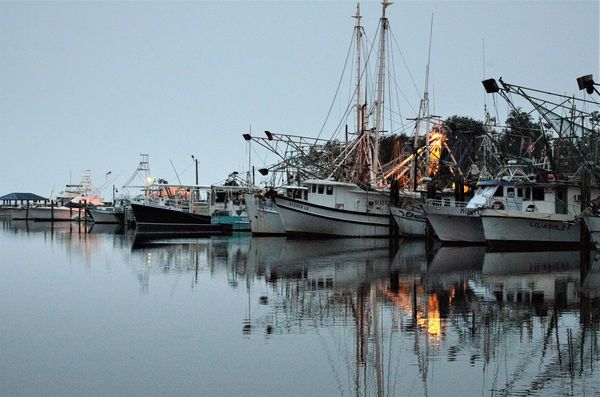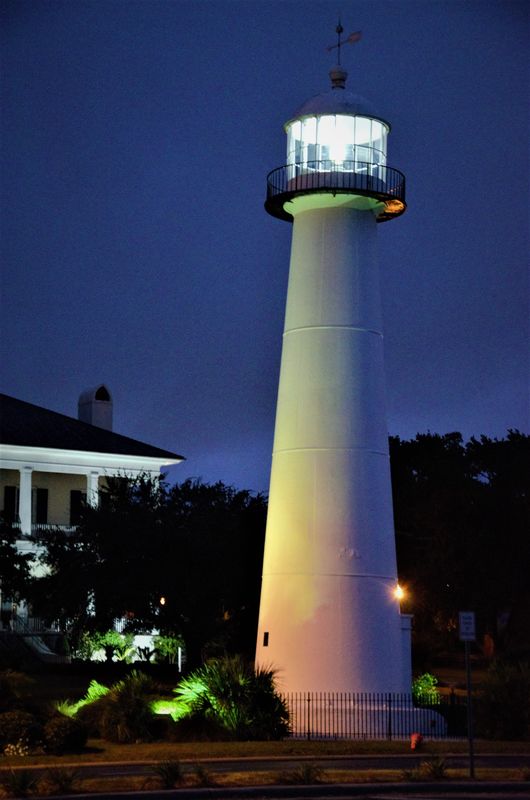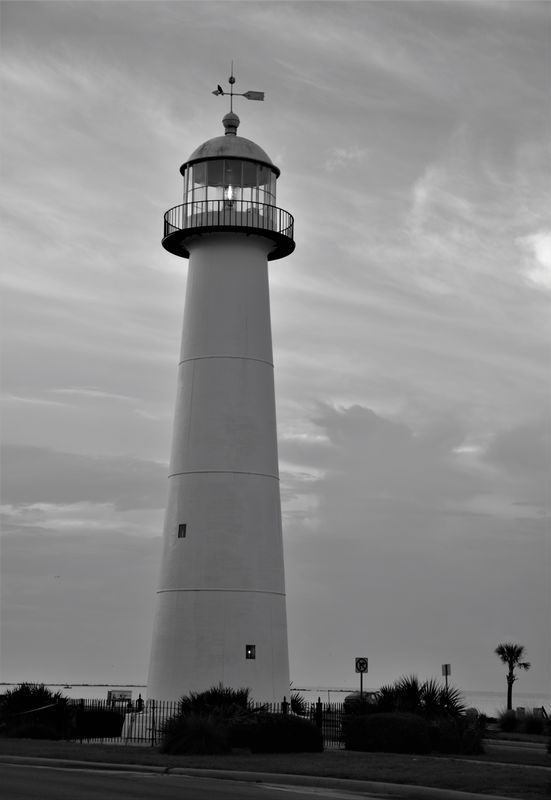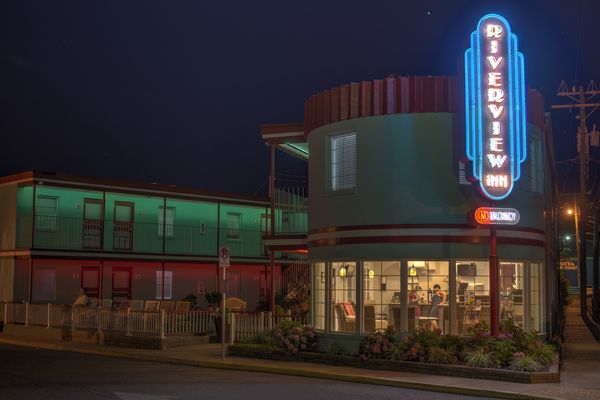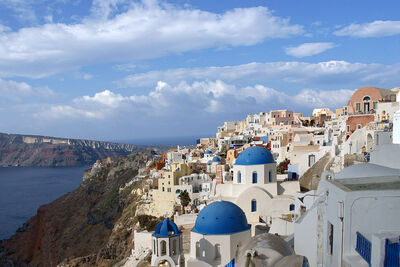Controlling Light
May 17, 2020 19:29:54 #
J11
Loc: Ocean Springs MS
My first post last week, PixelStan77 said "Light is our language". He was right but controlling light or keeping light from being blown out is difficult. I find it hard to control "hard" light and keep the overall image presentable. Attached are some photos I took in the past both with hard light and soft or flat light. The first was yesterday morning in Biloxi, MS. with the sun shinning through the fog. The next image is Ocean Springs Harbor after dusk with the street lights blown out. The next image is the Biloxi lighthouse with hard light from the light house and the last is the same but with flat light. I try to use exposure compensation to control the light. Is there any other method to control the light????? All taken with a Nikon D7000. Thanks and have a great week and be safe. Jim.
May 17, 2020 20:20:54 #
J11 wrote:
My first post last week, PixelStan77 said "Li... (show quote)
Jim,
The other way of controlling light is figuring out what time would be best to capture the image. Your first image has a great moody feeling. I like it. Your third image of the Lighthouse is superb from exposure and composition.


May 17, 2020 20:53:41 #
J11
Loc: Ocean Springs MS
Thank You. I have a lot to learn about photography but I am having a great time doing it.
May 17, 2020 21:40:25 #
The sensors in digital cameras don't have enough dynamic range to deal with high contrast light. I bracket photos to merge in Photomatix Pro HDR all the time. I don't think there's any way a single exposure can capture the extreme lighting of your night lighthouse photo.
I took this photo at night. I ended up taking 7 exposures each 3 f-stops apart in order to deal with the extreme range of light. I merged them in Photomatix Pro.
I took this photo at night. I ended up taking 7 exposures each 3 f-stops apart in order to deal with the extreme range of light. I merged them in Photomatix Pro.
May 17, 2020 21:57:32 #
May 18, 2020 06:34:14 #
J11 wrote:
Nice. Very nice. I will look into Photomatix Pro. Thanks.
I don't know if you are shooting RAW or .jpeg for your photos. I just wanted to add, if you do HDR photography set the camera to record RAW (.NEF) files. There's more data for the software to work with. Here are Photomatix recommendations for bracketing photos. There's much more information here:
https://www.hdrsoft.com/support/faq_photomatix.html#exposure
How many exposures should I take?
The total number of exposures that you need to shoot depends on the specific scene. Each scene is different in terms of its contrast or its dynamic range, that is, the exposure difference between the darkest areas (shadows) and the brightest areas (highlights) within the scene.
In every scene, you must shoot enough exposures to capture the entire dynamic range of the scene, which includes everything from the darkest areas in shadow to the areas in bright light.
The total number of exposures required also depends on the Exposure Value (EV) spacing between each exposure, as detailed in the next section. If you shoot your bracketed set of exposures in 1 EV steps (e.g., -1, 0, +1 EV), you will need more exposures to capture the entire dynamic range of a scene than if you shoot them in 2 EV steps (e.g., -2, 0, +2 EV). We recommend shooting in 2 EV steps (+/-2 EV) whenever possible.
Most high contrast scenes fall into one of the following two categories. A scene is considered high contrast when its dynamic range is too high for a camera’s sensor to capture in one photo.
Average high contrast: Common outdoor scenes with less than ideal light. To properly capture these scenes, 3 shots at 2EV spacing (i.e. -2, 0 +2), or 5 shots at 1EV spacing, are normally sufficient.
Very high contrast: This could be an interior of a room with a bright view through the window, or an outdoor scene with the sun in the frame. In this type of situation, you will need at least 5 exposures at 2EV spacing, or 9 at 1EV spacing, and sometimes even more. Refer to the section on capturing a very high contrast scene to determine the number of exposures.
May 18, 2020 07:34:45 #
CO wrote:
The sensors in digital cameras don't have enough dynamic range to deal with high contrast light. I bracket photos to merge in Photomatix Pro HDR all the time. I don't think there's any way a single exposure can capture the extreme lighting of your night lighthouse photo.
I took this photo at night. I ended up taking 7 exposures each 3 f-stops apart in order to deal with the extreme range of light. I merged them in Photomatix Pro.
I took this photo at night. I ended up taking 7 exposures each 3 f-stops apart in order to deal with the extreme range of light. I merged them in Photomatix Pro.
Nice Motel photo - reminds me of painting "Nighthawks" by Hopper. -k
May 18, 2020 07:44:13 #
In one of UHH's specialty sections, For Your Consideration, we did a four-part series on light in 2018. Here is the chapter on harsh and soft light:
https://www.uglyhedgehog.com/t-531762-1.html
In the 16 pages of discussion you'll find many photo examples. My preference is to work with the light so the result ends up with a certain mood, and I will usually emphasize the mood in post processing. Backlighting, low angle of sun and shadows at sunrise, and fog are all favorites. "Blown" whites and "blocked-up blacks" are just part of the scene's mystery and appeal
My suggestion is to keep an open mind and adjust to what you find at your destination rather than attempt to fight difficult conditions. I think your photos in this thread are lovely.
https://www.uglyhedgehog.com/t-531762-1.html
In the 16 pages of discussion you'll find many photo examples. My preference is to work with the light so the result ends up with a certain mood, and I will usually emphasize the mood in post processing. Backlighting, low angle of sun and shadows at sunrise, and fog are all favorites. "Blown" whites and "blocked-up blacks" are just part of the scene's mystery and appeal

My suggestion is to keep an open mind and adjust to what you find at your destination rather than attempt to fight difficult conditions. I think your photos in this thread are lovely.
May 18, 2020 08:24:52 #
kotography4u wrote:
Nice Motel photo - reminds me of painting "Nighthawks" by Hopper. -k
 I've always liked that painting. It's famous.
I've always liked that painting. It's famous.May 18, 2020 08:32:54 #
J11 wrote:
My first post last week, PixelStan77 said "Li... (show quote)
Nice shots. I think you managed the light nicely but, look closely at #1 "Download +" in the sky. You will see multiple darker spots. Your sensor needs a good cleaning.
May 18, 2020 10:05:18 #
gvarner
Loc: Central Oregon Coast
You can go only so far with EC on thr D7000, not a lot of dynamic range there to work with. Patience is the answer. Wait for the light to change or change your composition. B&W is a good candidate for high contrast scenes too. Look for silhouette opportunities. Compose to favor the light you have or wait for it to change.
May 18, 2020 10:38:03 #
SonyA580 wrote:
Nice shots. I think you managed the light nicely but, look closely at #1 "Download +" in the sky. You will see multiple darker spots. Your sensor needs a good cleaning.
To me they look like some kind of bird’s not a dirty sensor?
May 18, 2020 10:54:07 #
RichardSM wrote:
There are both, though the birds are easier to spot To me they look like some kind of bird’s not a dirty sensor?

May 18, 2020 11:42:00 #
J11 wrote:
My first post last week, PixelStan77 said "Li... (show quote)
Dynamic range is the issue, as others have stated. Many options are available, depending upon whether you are in nature or in a studio.
Recording JPEG files at the camera, about your only options are:
> Use dynamic lighting control options in the camera menus (probably the best JPEG option for nature scenes such as your lighthouses)
> NAIL your exposure and white balance by using some sort of exposure/white balance aid
> Use fill flash at close range (5' to 15' for on-camera shoe mount flash)
> Use reflectors, scrims, and diffusers to control portrait lighting
Recording raw files at the camera and post processing on a computer with Lightroom, etc. is a good option:
> Intentionally "overexpose" a little (test to determine how much EBTR — exposing beyond the right side of the histogram — you can tolerate). How much you can get away with depends on the sensor. The JPEG PREVIEW image may look burned out, but the raw file will record more highlight information that can be recovered. The overexposure gives you more recoverable shadow detail.
> ETTR — Exposing just TO the right of the histogram is my preferred method of working. The sliders in Lightroom have controls for Whites, Highlights, Exposure, Blacks, and Shadows, plus curves and many other enhancements. I can recover plenty of additional details from raw files of normal scenes. (See samples below.) I'm usually able to get most of the effect I'm going for. If there are extremes, I'll use EBTR and then HDR stacking:
> Use your camera's "auto-bracket" feature to make several exposures of a nature or still life scene, so that you can do HDR stacking (high dynamic range, also jokingly known as "high definition reality") in software. Many post-processing apps allow such stacking and will blend over, under, and normal exposures together for dynamic range compression. Results can range from subtle to horribly over-done, so exercise restraint! I was looking at some real estate photos on Zillow this weekend that were waaaaay over-processed with HDR technique.
> In the studio, you can use multiple lighting instruments with umbrellas, soft boxes, beauty dishes, or polished bowl flash reflectors. You can use scrims, "flags," gobos... reflectors in white, gray, gold, silver... "bare bulb" technique, and "Chinese lantern" fill sources.
.
Converted from raw to JPEG in post processing
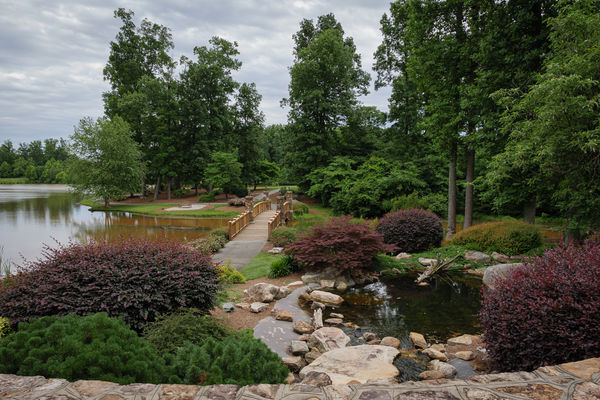
(Download)
Straight out of camera JPEG with automatic dynamic range control enabled
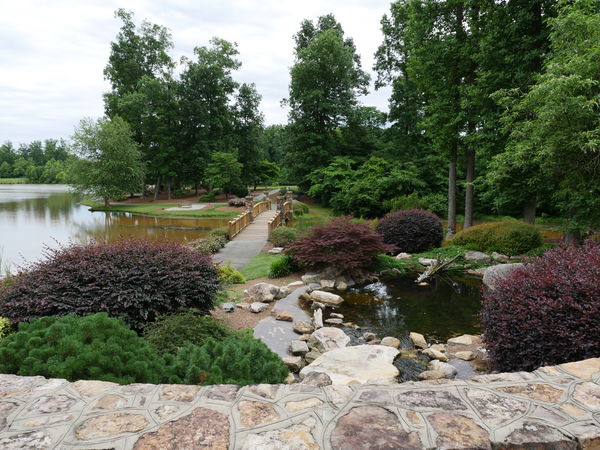
(Download)
May 18, 2020 12:00:51 #
Linda From Maine wrote:
In one of UHH's specialty sections, url=https://w... (show quote)
As usual, Linda, that's a great reference link! Plenty of input there.
If you want to reply, then register here. Registration is free and your account is created instantly, so you can post right away.
